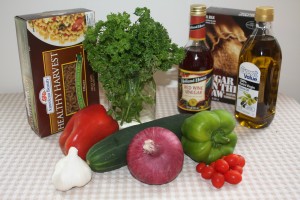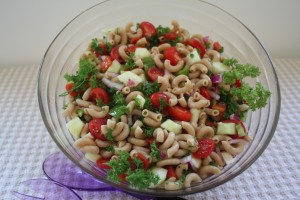High Blood Pressure (HBP) also known as Hypertension is today’s A to Z
Over 65 million Americans have been diagnosed with HBP, not to mention those who have it and are not aware or have not been diagnose. It is the most common heart disease in the USA and HBP an lead to stroke, heart attack, kidney damage, pancreatic damage and eye diseases.
Hypertension occurs when cholesterol, toxins, and plaque deposits are found on the walls of the blood vessels. Which in turn causes the blood flow to be constricted and less blood flows through the veins causing HBP.
HBP is known as the silent killer because many do not know they have HPB until the symptoms become severe enough.
High blood pressure is a serious condition and should be monitored by a health care professional. Your blood pressure should be taken on a regular basics. If you do not have a monitor at home, try your local pharmacy they usually have a blood pressure station.
Try taking your blood pressure at the same time, every time and in the same situation. Research has shown the arm should be bent and near the heart. Normal reading is 120/80.
Blood pressure is represented by a pair of numbers.The first is the systolic pressure which is the pressure exerted by the blood when the heart beats, forcing blood into the blood vessels. This reading indicates blood pressure at its highest.
The second reading is the diastolic pressure, which is recorded when the heart is at rest in between beats, when the blood pressure is at its lowest. Both represent a ratio of systolic blood pressure to diastolic blood pressure.
Research suggests HBP is higher in women after menopause, men and African Americans.
While researching this subject, I found most of the books and doctors same the same thing. Diet and Exercise!. UGG! for some of us. In this case it is absolutely true, both diet and exercise can help to lower your HBP.
Diet plays an important part and some of the food recommended for reducing HBP include:
- Potatoes, and the water they were cooked
- Watermelon seed tea
- Avocadoes
- Lima beans
- White and pinto beans
- Dried peas
- Almonds
- Parsley, benefits the blood and is a natural diuretic
- Yams
- Bananas
- Carrots, benefits the blood
- Celery and celery seed, benefits the blood
- Green leafy vegetabels
- Garlic, raw, benefits the blood, contains chemicals that help in lowering HBP
- Reishi oriental mushrooms
- Onions, lipid lowering activity
- Cucumbers, high in potassium, phosphorus and calcium diuretic and calming
- Apples and apple cider vinegar
You’ve heard of an apple a day will keep the doctor away, but with HBP it should be two. Apple Cider vinegar taken on a regular basis mixed in with grape juice may help.
Research have shown herbs that may help include:
- Hawthorn berries, nourishing the heart and will dilate and strengthen the blood vessels
- Yarrow relaxes the blood minor blood vessels and improves blood flow
- Rosemary is a general tonic for the circulatory system
- Cayenne pepper may help to stabilize the blood pressure
- Raspberry leaf tea
- Hyssop tea with honey and lemon
- Marjoram ease effects of blood pressure for dilating blood vessels
Vitamins: B-Complex may help to detoxify the liver and prevent fatty deposits in the arteries. Vitamin C nourishes the veins and improves arterial function. Vitamin E supplies oxygen to the blood. CoQ-10 along with omega 3’s are nutrients that provide oxygen to the vessels and help with HBP.
Calcium and magnesium may be missing in those suffering from HBP, along with potassium.
Research has shown deep breathing may help to lower blood pressure. Take a deep breath and hold it for 10 seconds, and exhale slowly for ten seconds. Repeat these deep breathing exercises two or three times a day, for a minute or so.
The less oxygen we take in, the harder the heart has to work, the harder the heart works the higher the blood pressure.
Stress can cause problems with HBP so take time to relax and meditate with no distractions or noise. I know not an easy task in today’s world. But your health is important so take time to smell the roses.
Some have found help using foot reflexology for lowering blood pressure:
- Use both thumbs and rub the center of the arch at the point between ball and heal of the foot
- Rub your foot for about a minute or two.
- Or Rub the arch of the foot with a tennis ball if the using your thumbs is a problem.
- The tennis ball will help to stretch the arch of the foot as well
Most health care professionals recommended taking in less salt. Salt retains water which puts extra pressure on the veins.
Sugar can have an effect by retaining salt in the body which can increase HBP. OH OH! Here is the bad news, milk chocolate, coffee, sodas, and tea can increase the blood pressure. There are some herbs to avoid as well, licorice and ephedra.
Always check with your health care professional before trying any home remedies, high or low blood pressure is a serious condition.
Good Health!


